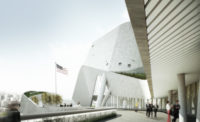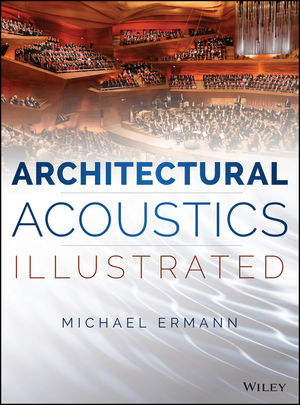The phrase “skin deep” applies to many architectural award programs in this country. One program, however, stands resolutely outside these compromises. For 30 years, the Aga Khan Award for Architecture has looked at architecture in a more holistic way. Since the program’s founding in 1977, process, rather than building-as-object, has dominated the awards program. Limited in scope to a three-year cycle, the Aga Khan Award for Architecture examines submissions from a worldwide network of nominators (including the editor in chief of Architectural Record), narrows the field to a manageable number, then sends out professionals to visit the projects, whether in major cities, rain forests, or desert towns. They prepare exhaustive evaluative documents, explaining how intentions play out in real sites for real people, and thus provide a fact-based analysis for a master jury, composed of sociologists, philosophers, and artists, as well as architects a diverse group that makes the final selections.

For this year’s awards, the 10th cycle conducted by the awards program, nine projects emerged from the rigorous routine. In virtually every case, a narrative accompanied the winners that explained the scope of accomplishments: No single image would suffice. As a poignant example, one award went to the Rehabilitation of the Walled City of Nicosia, in Cyprus. Winners included representatives of the Greek Cypriot and Turkish Cypriot Communities, who overcame political enmity and boundary disputes in 1979, when they met to devise a master plan for the historic city. All involved, including architects, planners, and the mayors of opposing sides of a physical wall, realized that their beloved home city was too valuable to lose. The resulting cooperation “has been successful in reversing the city’s physical and economic decline.” What other program would recognize such courageous heroism?
In early September of this year, representatives of all nine winning projects flew to Kuala Lumpur, the capital of Malaysia, to dress in native finery and receive their hard-earned honors in the Petronas Concert Hall, housed in the Cesar Pelli–designed complex itself honored in 2004. In personal attendance, and speaking to the assemblage, His Highness the Aga Khan underscored the principles outlined in his eponymous program, served as host for the awards ceremony, and opened subsequent seminars exploring the meaning of the winners within the context of the program and the larger world. As chairman of the steering committee that governs the awards program, the Aga Khan has personally involved prominent academics and other thinkers, artists, and architects, such as the late Hassan Fathy, Fumihiko Maki, Frank Gehry, and Charles Correa, who have helped him set the agenda for each cycle of the awards.
This individual, who embodies moral qualities in real life as spiritual leader, or Imam, of the Ismaili Muslims, has spent 50 years of leadership doing good things: 2007 marks his Golden Jubilee. While it might seem easy to dismiss a privileged leader of 15 million people born to wealth and influence, Prince Karim Khan, born in 1936 in Geneva, Switzerland, did not seek his role, as Philip Jodidio points out in his recently released authorized biography of the prince. Instead, he has worked hard to put his gifts and powers to positive uses. Since assuming the mantle as Aga Khan in 1957, he has exercised broad-ranging intelligence, concern, and (to our community of architects) an enlightened belief in the power of architecture to change the world for the better. Uniquely, through the Aga Khan Development Network, he has harnessed that belief to the necessary social and economic forces, combined with the lessons of history, to make decided improvements. At this fractious global moment, voices of reason and hope particularly deserve our admiration and respect.
Why should non-Muslims care? While his focus has rightly been on building within his own Ismaili community, which is far-flung, he nevertheless has reached out to improve the lot of all Muslims, and by extrapolation, the world. In addition to his economic development work, he maintains an active historic-cities program, sponsoring restoration and new projects in Cairo; in Mostar, Bosnia and Herzegovina; in embattled Kabul, Afghanistan; and in Zanzibar, Tanzania, among others. His program for Islamic Architecture at Harvard and the universities that bear his name in Pakistan, London, and Central Asia offer college educations to a new generation of young Muslims.
IHow refreshing, at a time of international cynicism and cultural fascination with the superficial, of celebrity and instant gratification, that someone recognizes the deeper power of architecture, and how gratifying for architects and planning professionals that someone recognizes architecture’s defining abilities, even to foster international understanding. Honor awards can merely create new generations of architectural celebrity, but if carefully conceived and executed, like the Aga Khan Awards for Architecture, they can articulate values for the larger society. architectural record salutes the 10th cycle of the Aga Khan Award for Architecture, and to H.H. The Aga Khan, we wish you 50 more productive years. Asalamu alaykum.
If you wish to write to our editor-in-chief you can email him rivy@mcgraw-hill.com.



Post a comment to this article
Report Abusive Comment